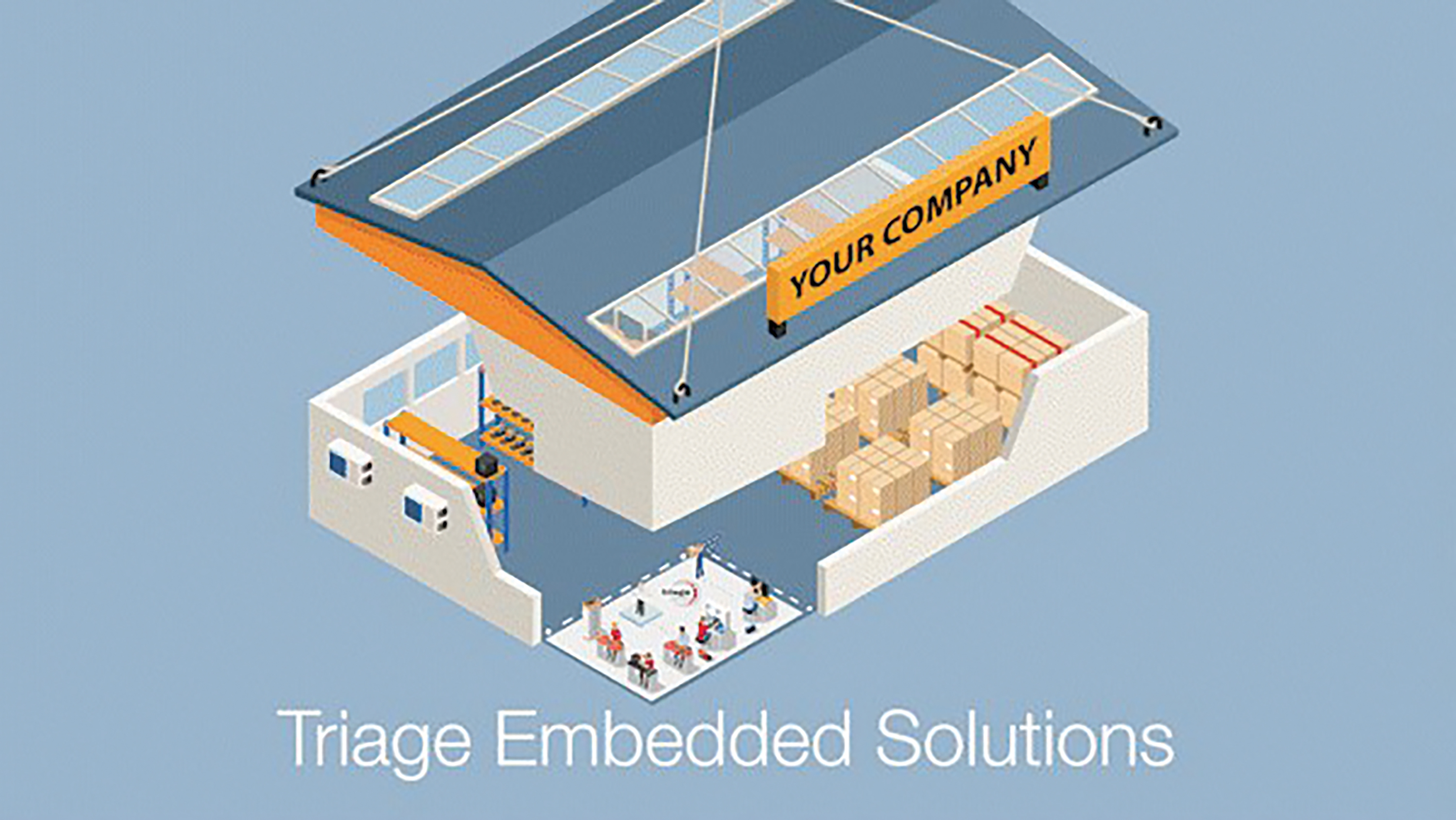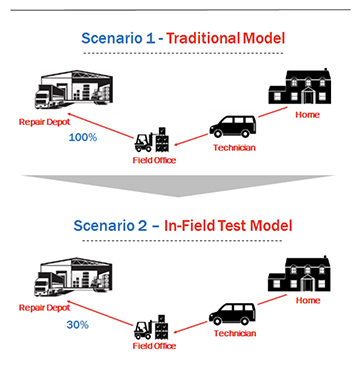How One Solution Provider Drives Reverse Logistics Efficiencies at The Edge of the Supply Chain
By Dennis Ayo, Triage Partners
By strategically co-locating resources and modifying its proprietary cloud-based workflow control software or licensing its Software as a Service (SaaS), Triage Partners has provided its customers and business partners with exceptional results by deploying its innovative model at the edge of the supply chain.
Triage Partners Case Studies:
DHL Supply Chain North America licenses and integrates Triage Partners WipIT™ software to drive rapid returns processing
Returns processing for technology products are returned to centralized distribution centers to clear RMA’s and provide credit to customers. In many cases, these returned products are received, processed and sent to authorized repair depots for screening, testing and repair. Depending on the product and type of return, product is needlessly shipped to the repair depots and eventually returned to the distribution center. These products are then sold based on the manufacturer’s disposition criteria, losing product value every day the product is not processed.
DHL Supply Chain North America supports many technology customers for reverse logistics. To enhance their value, DHL required a system to complement their WMS or their customers’ WMS systems to adhere to their customers work instructions and capture critical information such as cosmetic inspection, test and failure reasons, upgrades (revisions), serial numbers, labor productivity, replacement parts usage and kitting materials to rapidly process product returns.
DHL licensed and integrated Triage’s WipIT™ system for returns processing due its flexibility, scalability and advanced business intelligence. Today, only product that fails test and screen processes are shipped to repair depots and passed product is kitted and moved to finished goods inventory available for sale within days of the return. Approximately 85% of the returned product remains in the distribution center ready for sale and only defective product is sent to the manufacturers authorized repair depots.
DHL provides its customers greater value by mitigating transportation costs, unnecessary touches and maintains a greater product value by rapidly moving returned product into sellable goods within days of receipt.

According to Jesse Laver, VP Business Development Technology, DHL Supply Chain NA, “Our customers rely on us to help them stay ahead of the technologies shaping the future of the supply chain. Partnering with tech companies like Triage is another way we combine strategic and operational excellence to improve service levels while driving continuous efficiency improvements for our customers.”
Tier One Telecommunications deploys test and refurbishment of Customer Premise Equipment (CPE) in Field Offices and Cross Docks
Due to a high percentage of no fault found (NFF) returns of approximately 70% percent, a Tier-One Telecommunications Carrier needed to process product returns as close to the point of return as possible.
Customer field technicians receive CPE and minor materials from their field offices for servicing residential and business customers. Traditionally, technicians replace CPE equipment at the customer home or business, return replaced CPE to field offices daily or based on a schedule, product is consolidated, transported to cross docks and product is shipped weekly to certified regional repair depots.

Typically returned product is received at the repair depot, product is moved into defective goods storage where it may sit for days or weeks based on the production schedule, then moved to the production floor to be processed. Product that passes the test process will have data erased and if applicable, new images or software is loaded. Passed product will then be moved to cosmetic inspection stations where product is evaluated, and cosmetic parts are replaced to meet customer specifications. Finished goods are stored and shipped based on the customer schedule. This traditional reverse logistics process would have an average cycle time from receipt at the field office through the reverse pipeline and back to the field in 35 days or more.
The customer performed market analysis to determine if rotating technicians in field offices or performing the service in cross docks would drive a greater return on investment (ROI). Each market has its own logistics requirements and based on the given market’s needs, the appropriate model was deployed. Both rotation to field offices and cross docks were used with the objective of turning returned product as rapidly as possible.
Working close with its customer and test technology partner, Triage modified its cloud-based WipIT™ system to adhere to specific work instructions, test procedures, cosmetic standards, materials usage and trained resources co-located within customer field offices and cross docks.
Additionally, there were logistics challenges managing refurbish replacement parts material to multiple locations. Based on the deployment model selected for the specific markets, min-max levels of materials (refurbish parts, packaging, inserts and miscellaneous manuals and power cords) were set up by location. The system captured materials usage and set up re-order levels automatically to be shipped to designed locations so stock would be available to maintain turn time metrics.
The benefits of the model were impressive, average cycle time of over thirty-five days was reduced to two days saving its customer transportation costs, inventory costs (greater turns reduce inventory required to support same level of demand), and mitigated touches and cost of money. It has been estimated that the traditional reverse logistics cycle for CPE devices has a total of thirty-five touch points. By implementing the new model testing and refurbishing product at the edge of the supply chain, nineteen touch points were eliminated for NFF returns.
There are many soft benefits, such as field technicians can collaborate with the test and refurbish process to provide immediate field feedback, technician confidence in test and refurbishment process and overall customer satisfaction due to root cause issue resolved rapidly.
 Dennis Ayo
Dennis AyoDennis Ayo, Executive Vice President at Triage Partners, LLC is a reverse logistics innovator. In the mid-1990’s as a partner at Circuit Test (CTI), he integrated CTI’s repair services with logistics leaders creating the industry’s first end of runway integrated repair and return service at airhubs first in Memphis, TN and then in Louisville, KY. CTI was eventually sold to Jabil Circuit in 1999 and Dennis became Senior Vice President at Jabil’s newly created subsidiary Jabil Global Services (JGS), adding reverse logistics and repair services to Jabil’s global electronics manufacturing business. Dennis was instrumental in the integration of repair services into Jabil’s end to end electronics manufacturing services. Prior to Triage and Jabil, Dennis held various business development and management positions with Apple Computer and Dell Computer. Dennis holds a BS degree from the College of Business at Florida State University.